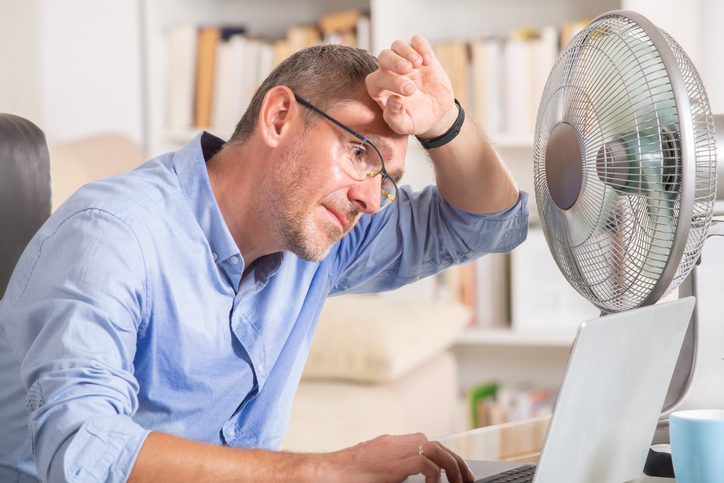What measures can you take to ensure you limit the effects of hot weather

Authored by QBE Senior Risk Manager Simon MacLean
As we encounter higher than usual summer temperatures more frequently, what measures can you take to ensure you limit the effects?
Who’s affected and what are the main health risks from heat exposure
For some people, particularly older people, those with underlying health conditions, those who can’t adapt to keep cool or those who are exposed to high levels of heat because of their work, the summer heat can bring real health risks. While there is no maximum temperature for workplaces, all workers are entitled to an environment where risks to their health and safety are properly controlled, including heat.
The main health risks from heat exposure are:
Dehydration from not consuming enough fluidsOverheating can worsen symptoms for people with existing heart or breathing problems.Heat exhaustion and heatstroke are potentially serious conditions that can occur if you get too hot.Skin damage from direct sunlight which may be irreversible.
Heat Exhaustion and Heatstroke
Exposure to excessive heat for some time can lead to either heat exhaustion or heatstroke.
Signs of heat exhaustion include:
a headachedizziness and confusionloss of appetite and feeling sickexcessive sweating and pale, clammy skincramps in the arms, legs and stomachfast breathing or pulsea high temperature of 38’C or abovebeing very thirsty
With early intervention and cooling the individual down within 30 minutes, the effects of heat exhaustion should subside.
Heatstroke requires immediate medical support and signs include:
feeling unwell after 30 minutes of resting in a cool place and drinking plenty of waternot sweating even while feeling too hota high temperature of 40’C or abovefast breathing or shortness of breathfeeling confuseda fit (seizure)loss of consciousnessnonresponsive
If an individual presents these symptoms call for emergency assistance.
Limiting the effects of excessive temperatures
If working indoors close blinds that face the sun to keep indoor spaces cooler.If working outdoors try to utilise shaded areas. Take frequent breaks and drink plenty of fluids, avoiding alcohol. Try to keep out of the sun between 11am to 3pm when the UV rays are strongest.Walk in the shade, apply sunscreen and wear a wide-brimmed hatAvoid physical exertion in the hottest parts of the day.Make sure you take water with you even when travelling.Where available take a cool showerCheck the latest weather forecast and temperature warnings and plan work activities accordingly.
Heat can be major hazard and must be factored into any risk
Things to consider are:
work rate – the harder someone works the greater the amount of body heat generatedworking climate – this includes air temperature, humidity, air movement and effects of working near a heat sourceemployee clothing and respiratory protective equipment – may impair the efficiency of sweating and other means of temperature regulation; employee’s age, build and medical factors – may affect an individual’s tolerancetraining- make sure employees are fully aware of the signs of heat related effects, particularly new and young employeesmonitoring – ensure periodic monitoring is undertaken to detect early signs of heat related issues. These are to be recorded to support claims defensibility.




